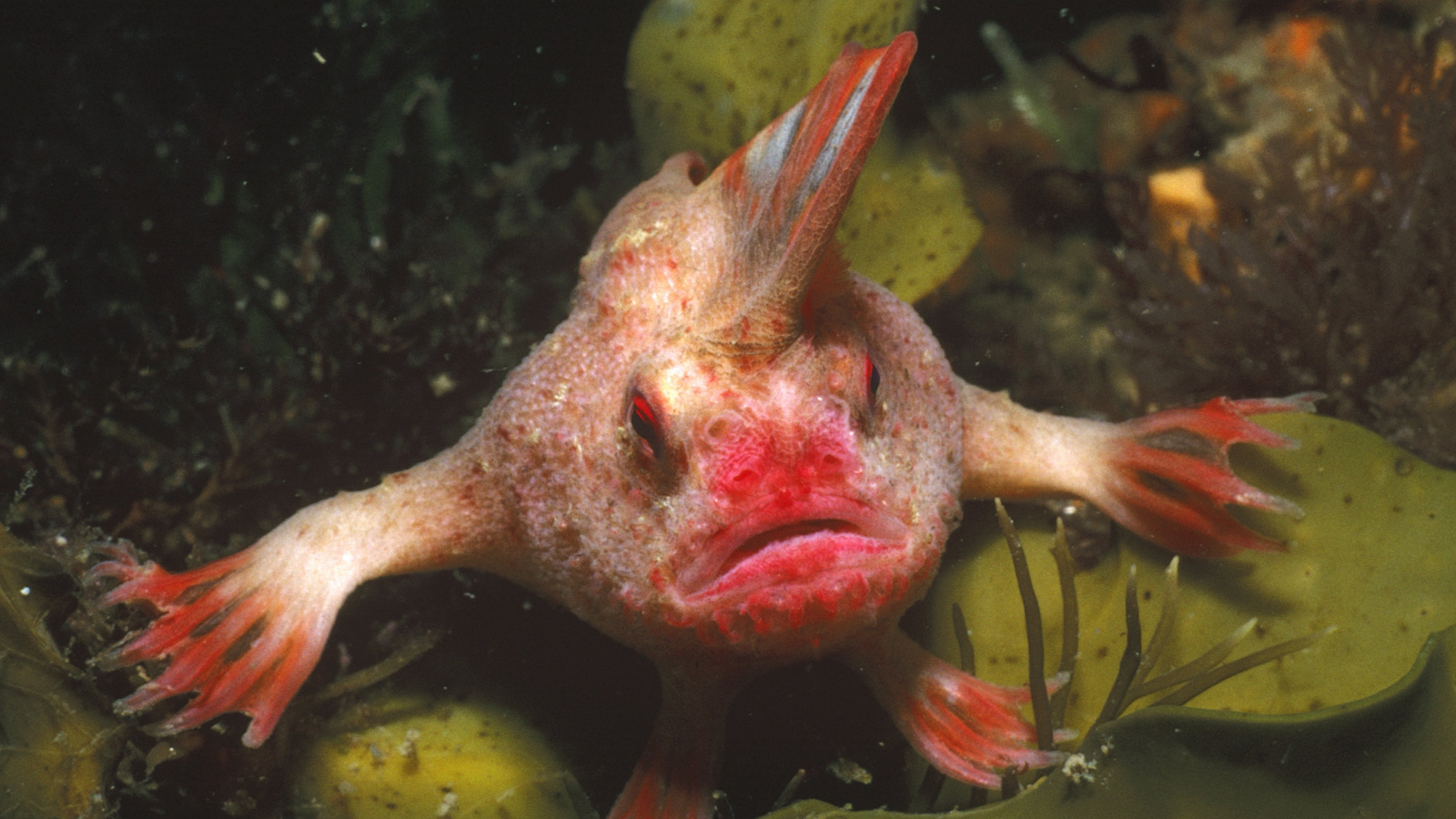
Name: Red handfish (Thymichthys politus)
Where it lives: Two 164 feet (50 meters) patches of reef off the coast of Tasmania, Australia
What it eats: Small crustaceans, worms and mollusks
Why it's awesome: If you imagined a tiny fish with hands for fins, a moody downturned mouth and an extravagant mohawk, you might come close to visualizing the red handfish.
This type of anglerfish grows no more than 4 inches (10 centimeters) long and can come in a range of reds, browns and pinks — often with brighter colors around the edges of its fins. Unique markings on individuals can also be used to tell these weird-looking animals apart.
Unlike many fish, this bizarre animal, which lives on the seabed, doesn't have a swim bladder for buoyancy. Instead, its pectoral fins have evolved into large "hands" to help it move around by walking across the seafloor.
"It’s an amazing curiosity of evolution," Andrew Trotter, leader of the red handfish conservation breeding project at the University of Tasmania's Institute for Marine and Antarctic Studies (IMAS), told Live Science in an email. "While walking with fins is rare, some fish can even do this on land. The loss of a swim bladder is a common trait among many benthic fish, as fine-tuned buoyancy control is no longer needed."

Despite their odd appearance, experts working with them find them quite endearing. "Of course you would have to say they are a bit cute," Trotter said.
Related: Watch rare endangered pink handfish walking in 19th-century shipwreck off Tasmania
This critically endangered fish is only found in two small patches of reef off Tasmania, Australia. Because they can't waddle far on their hand-like fins, they are particularly susceptible to threats, such as habitat loss, pollution and urban development.
"The red handfish is probably in the rarest 'handful' of fish in the world, no pun intended," Trotter said. "It's really hard to know exact numbers, but it has to be right up there with the most imperiled fish species that we know of."
They are so rare that researchers in Australia recently took 25 of the 100 known wild individuals into captivity for several months in fear that marine heatwaves could wipe out the entire species.
Trotter, who looked after the captive fish, said there were a few individuals in particular with standout personalities. "One might call this 'attitude,'" he said.
Being responsible for the care of these endangered animals was "wonderful, but also very stressful at times," he added. Three of them died in captivity, but 18 were returned to the wild once the heatwaves subsided. The remaining four are now in IMAS' captive breeding program to help protect the future of the species.
But their chance of survival is still in question. "When you have so few animals left in one place it seems likely an extreme event could lead to extinction," Trotter said.







